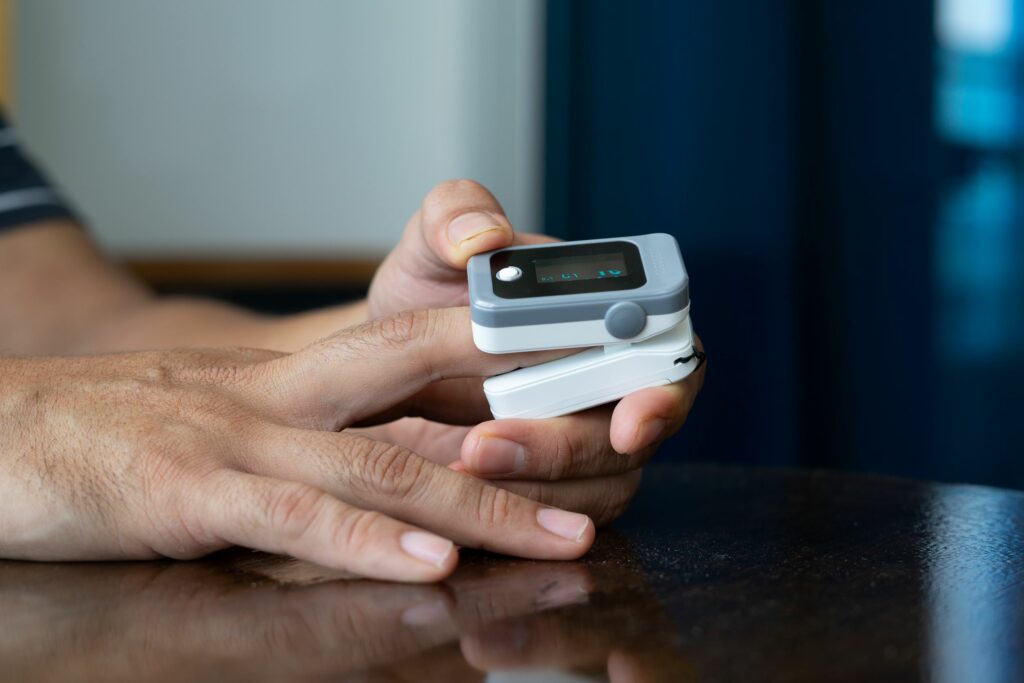The COVID-19 pandemic is a global public health emergency that is wreaking havoc on health systems around the world and prompting the adoption of telemedicine solutions at a breakneck pace. In this article, we will talk about the top Remote Patient Monitoring or RPM equipment for detecting and combating COVID-19 at home.
Before the present pandemic, healthcare systems faced the problem of managing chronic diseases that are becoming more prevalent as people live longer. Management entails preventing functional impairment and assisting people in maintaining a high quality of life for as long as possible. This necessitates regular examinations of the patient’s health status in order to keep track of the treatment regimen, avoid worsening, and avoid the onset of new diseases, injuries, and complications. One approach is for patients to be able to provide health data to clinicians without having to see them, and for these data to be delivered and assessed often enough to launch interventions or treatment adjustments before the patient’s health status becomes acute.
Telemedicine’s integration with remote patient monitoring (RPM) became a viable solution to utilize during the pandemic, given its effectiveness in monitoring chronic diseases while reducing the pressure on emergency departments (EDs). Moreover, RPM has been proved to be a viable alternative to traditional diagnosis and in-person care for COVID-19 patients in terms of reducing hospital readmission and detecting symptoms.
RPM equipment you could use for COVID-19 home detection and treatment
With the successful rollouts of COVID-19 vaccines, most patients infected with the virus will only have a mild condition and will be able to recover at home. However, older adults and people of any age who have pre-existing medical conditions should have a continuous contact with their doctor as symptoms may appear anytime, which may put them at greater risk of becoming severely ill with COVID-19.
1. Finger Pulse Oximeter
A pulse oximeter is one of the most common RPM equipment that measures the amount of oxygen in your blood (without having to use a needle to draw a blood sample). Pulse oximeters are commonly found in doctor’s clinics and hospitals. For people who have a condition that affects their oxygen levels such as long-term heart or lung problems or an infection like COVID-19, it is advisable to keep a pulse oximeter at home.
Symptoms of low blood oxygen levels include fatigue and shortness of breath. However, there are times that you may not experience these symptoms even if you have COVID-19. That is why your doctor may advise you to check your oxygen level at home. RPM-enabled pulse oximeter allows continuous self-monitoring of COVID-19 symptoms with proper guidance from healthcare providers. A pulse oximeter that is connected to an RPM mobile application allows you to remotely send oxygen level measurements to your doctor in real-time in order to get the medical attention you need in case your oxygen levels go out of the normal range.
2. Thermometer
Temperature screening has been a primary method of identifying cases during the pandemic, as it is one of the earliest and most often reported symptoms of the infection; that is why keeping a quality functional thermometer in your medicine cabinet is highly recommended. Keeping track of your temperature if you think you’ve been exposed to COVID-19 will help prevent the virus from spreading inside and outside your house. If you experience a fever or any other COVID-19 symptom, you should isolate yourself from people and call your doctor as soon as possible.
However, you should not rely solely on temperature screening to determine whether you have COVID-19. Other coronavirus symptoms to be aware of include shortness of breath, coughing, fatigue, headache, and loss of taste or smell. According to the Centers for Disease Control and Prevention (CDC), symptoms of a coronavirus can appear 2-14 days after exposure to the virus.
For older adults and people with chronic diseases who have been exposed to COVID-19, it is important to continuously monitor temperature readings in order to remotely and immediately alert their doctors for further evaluation, diagnostic testing and treatment.
3. Wearables, smartwatches
In the past year, researchers have introduced a number of IoT-based devices and wearables, with good results in terms of high accuracy in diagnosing patients in the prodromal phase and monitoring patients’ symptoms, such as respiratory rate, heart rate, temperature, and so on.
Wearable electronic devices, such as activity trackers and smartwatches, that allow physiological signals to be continuously monitored can be used to detect asymptomatic and pre-symptomatic COVID-19 cases early. They can offer novel insights into our health and well-being. Unlike traditional clinical testing, which may occur only a few (or less) times per year, wearables provide continuous access to real-time physiological data. This enables the detection of anomalies from an individual’s ‘normal’ baselines: a fundamentally different approach to healthcare than current practice, which is based mostly on physiological data compared to population statistics.
And, in the midst of the COVID-19 pandemic, the potential of the next-generation wearable health devices has become clear. With further invention and development, the next-generation of wearable sensors, and their capacity to continually monitor both physical and biochemical data, may play a critical role in combating the next pandemic.
Stay in touch with healthcare providers using these RPM equipment at home
During the pandemic, advanced medical equipment like pulse oximeter, digital thermometer, and wearable sensors are already creating an impact on healthcare by allowing for remote health monitoring and prediction of health events. However, these tools should not replace healthcare providers’ medical diagnosis. Along with the regular measurements of vital signs at home, it is very important to stay in touch with healthcare providers through Remote Patient Monitoring program. Staying in touch with healthcare providers enables rapid triage to provide immediate care to those patients in greatest need.











